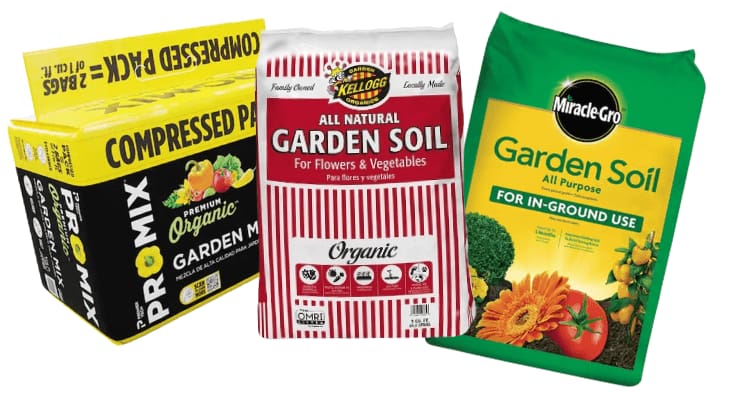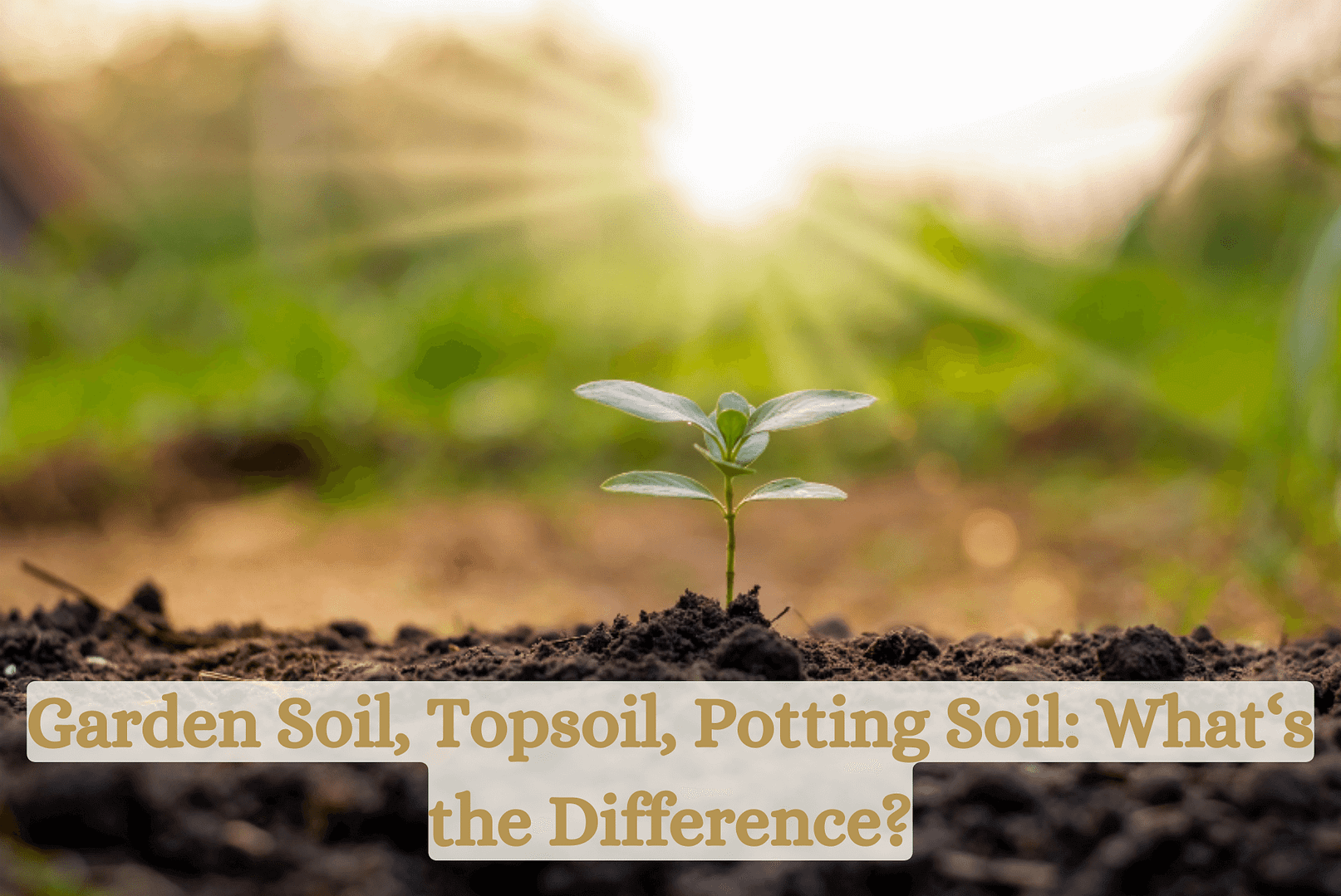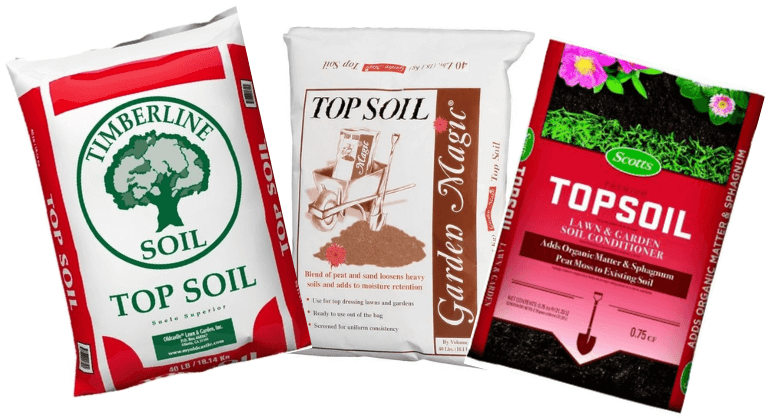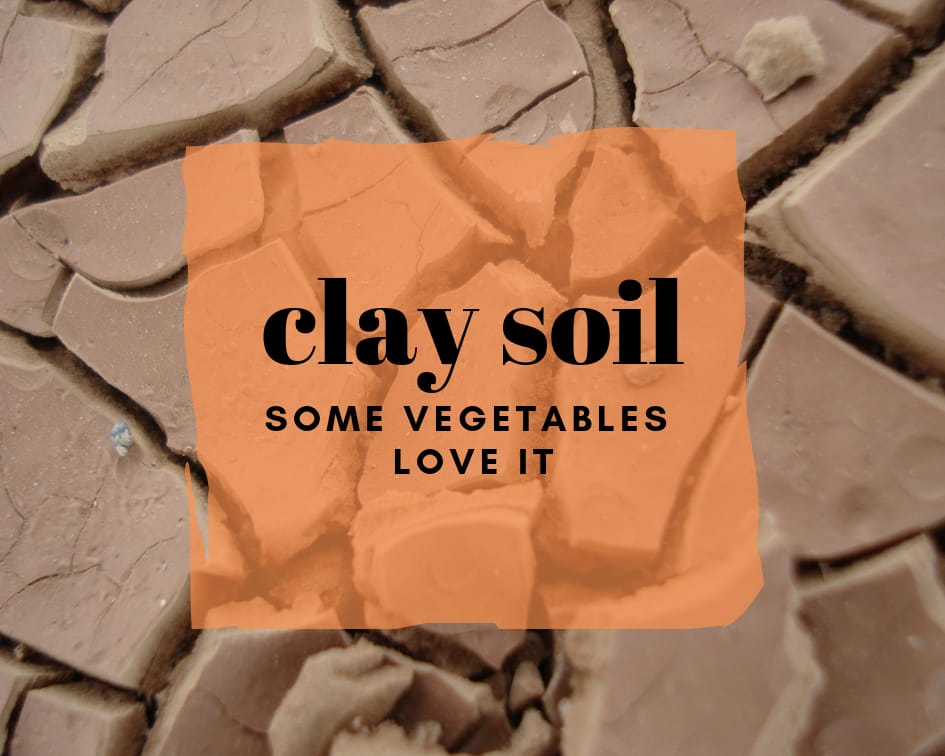This post may contain affiliate links. As an Amazon Associate we earn from qualifying purchases.
Is there a difference between planting soil, topsoil and potting soil? You bet! Read on to get the lowdown on each one.
Is it just me or do you, too, love the smell of soil? Especially if it’s really good soil, like the type I get from making leafmould. Dark, earthy and so amazing for the garden.
We all need to make those occasional trips to the big box stores or the nursery, however, to get our hands on the store-bought stuff. Not that there’s anything wrong with it. Well, some of it isn’t that great, but most are perfectly suited to what we grow in the home garden.
Since soil is the most important aspect of gardening, and it determines whether our plants thrive or die, let’s take a look at three types that are commercially available.
Specifically, planting soil (also known as “garden soil”), topsoil and potting soil.
First, let’s get clear on “dirt”
I’ve noticed a trend lately with new gardeners: they confuse dirt with soil. I don’t know how this got started but I wish it would stop.
It’s especially insulting to gardeners who work their hineys off to create amazing soil for their plants.
I don’t plant in dirt and I have a feeling you don’t either.
Dirt is dead. Soil, on the other hand, is full of life. “In one cup of soil there are upwards of 200 billion bacteria, 20 million protozoa, 100,000 nematodes, and 100,000 meters of fungal hyphae,” according to Sabrina Williams with the University of California, Agriculture and Natural Resources.
“Soil is a living, complex ecosystem,” she said.
Dirt, on the other hand, is far from a living ecosystem. “It has none of the minerals, nutrients, or living organisms found in soil,” suggests the editors at naturespath.com. “It is not an organized ecosystem. There is no topsoil or humus, no worms or fungi,” they conclude.
You are a gardener and you grow your crops, flowers, ornamentals and trees in soil. Say it loud!
What is planting soil/garden soil?
We’ll call it garden soil from here on, k?
Garden soil, the type you purchase by the bag, is typically composed of peat moss with organic matter mixed in. It’s substantially heavier than potting soil, so it remains wet longer.
When comparing prices, garden soil is in the mid-range between straight topsoil and potting soil.
Many gardeners till garden soil into the existing soil to improve the structure and, possibly provide nutrients. Since not all garden soils are created equally, however, it’s important to read labels before settling on one. Here are three examples of ingredients in commercially available garden soil. If you’re curious about any ingredient listed in any of the garden soils, potting soils, potting mixes or topsoils mentioned, check out our glossary at the end of this post.
Here are three examples of ingredients in commercially available garden soil. If you’re curious about any ingredient listed in any of the garden soils, potting soils, potting mixes or topsoils mentioned, check out our glossary at the end of this post.
Kellogg All Natural Garden Soil: Aged recycled forest products, aged arbor fines, composted chicken manure, bone meal, alfalfa meal, oyster & dolomite limes (as pH adjusters), bat guano, worm castings, and kelp meal
Miracle-Gro All Purpose Garden Soil: “one or more of the following:” Peat, processed forest products, coir, and/or compost sphagnum peat moss and fertilizer.
ProMix Organic Garden Mix: Sphagnum peat moss (60-70% by volume), perlite, coir, gypsum, ground limestone (for pH adjustment), wetting agent, mycorrhiza.
Two of the above products contain peat moss. Two contain lime. Only one contains “fertilizer,” although the other two have more natural versions of fertilizer.
If I were to buy one of these products, I’d have a hard time choosing between Kellogg’s and the ProMix, but I believe I would end up choosing the latter.
Just a thought: Why does Miracle-Gro insist on putting fertilizer in everything they produce?
What is topsoil?
This is where many new gardeners run into trouble. Not their fault, really. Not all brands of topsoil are created equal. In fact, the ingredients can vary, wildly.
Topsoil has several common uses:
- Fill low spots in the lawn, along pathways or anywhere else where the soil is overly-trodden.
- Amend garden beds.
- A cheap way to create landscaping berms.
Topsoil from the nursery or garden center is typically bereft of any nutritional value. Let’s check out the ingredients in three popular brands of topsoil.
- Garden Magic Topsoil: Reed sedge, peat, perlite, sand
- Scott’s Premium Topsoil: “This product is regionally formulated from (one or more of the following: peat, composted forest products, aged rice hulls or compost) and Sphagnum Peat Moss.”
- Timberline Topsoil: “Our products are made from quality by-products from the lumber, forestry and farming industries, prized by gardeners throughout the U.S.”
Vague much? To top it off, the manufacturing of most we’ve checked into seems to be rather inconsistent. Read the reviews and you’ll find some gardeners rave about a certain topsoil while others claim that there were “… bits of plastic, rocks, mulch, and even grubs in it!”
Reading the labels may get you nowhere. So do a thorough check of product reviews before purchasing. Luckily, topsoil is inexpensive, so you won’t waste too much money if you purchase a dud.

How is potting soil different from garden soil and topsoil?
Potting soil is the money maker for soil producers. Not only is it popular with houseplant enthusiasts but many outdoor gardeners like to use it in their raised beds and outdoor potted plants.
To make it confusing, there are two main types: potting soil and potting mix. What’s the difference?
Both potting mix and potting soil typically have a coarser texture than garden soil or topsoil. Potting mix doesn’t contain soil but potting soil might.
Both also contain material to promote quick drainage, typically perlite.
 Let’s compare the potting mixes to potting soil
Let’s compare the potting mixes to potting soil
Here are three examples of the ingredients in some popular potting mixes.
Miracle-Gro Potting Mix: “Formulated from (One or More of the Following: Processed Forest Products, Peat, Coir, and/or Compost),” and Sphagnum Peat Moss, Perlite, Fertilizer … and a Wetting Agent.
The fertilizer in the mix is “Derived from Polymer-Coated: Ammonium Nitrate, Ammonium Phosphate, Calcium Phosphate, and Potassium Sulfate.”
Espoma Organic Potting Mix: “… a rich blend of sphagnum peat moss, humus & perlite enriched with earthworm castings, alfalfa meal, kelp meal & feather meal …” It also contains “MYCO-TONE: A proprietary blend of endo & ecto mycorrhizae.”
sungro Black Gold Potting Mix: “… premium Canadian sphagnum peat moss, bark, compost, and earthworm castings.” It also contains perlite and an organic fertilizer. No NPK mentioned.
Two of the above-mentioned products contain fertilizer, yet there is no mention of the NPK. I would naturally stay away from those.
If you’re curious about the mention of mycorrhizae in the Espoma mix, see our glossary, below.
Check out these three examples of what makes up some popular potting soils:
FoxFarm Ocean Forest Potting Soil: “Blend of earthworm castings, bat guano, fish and crab meal, forest humus, sphagnum peat moss, and more.”
Garden Magic Potting Soil: Reed sedge peat, perlite, sand
Sungro Horticulture Black Gold Potting Soil: Screened earthworm castings, Canadian sphagnum peat moss, compost, forest humus, perlite and pumice.

Planting Soil, Potting Soil and Potting Mix Ingredient Glossary
Aged Recycled Forest Products: Basically this is just shredded up and aged lumber. “It can mean aged and collected waste/byproducts from saw milling and lumber operations, i.e. saw dust, shavings, bark, wood chips different particle sizes from the different stages of milling,” according to the pros at elevasoils.com.
The benefits of aged recycled forest products in soil includes improving the soil’s aeration and drainage, much like perlite.
Aged rice hulls: The outside cover of a grain of rice that protects the grain as it’s growing. In the garden, there are three types:
- Fresh rice hulls: Careful with these, they may contain viable seeds. Unless you really want to grow rice, go with one of the others. Oh, and they increase the soil’s pH.
- Parboiled rice hulls: These are fresh hulls that have been steamed and sterilized, thereby killing off the live seeds and any pathogens that may be among them.
- Aged rice hulls: These are rice hulls that are allowed to decompose on their own. When the hulls turn a brownish color, they’re considered aged.
- Composted rice hulls: “These are rice hulls that have been composted by either aerobic or anaerobic methods.” “Composted rice hulls work better in most applications.” (natureswayresources.com)
Rice hulls are touted as an aid in drainage and aeration to the soil.
Actually, until studies prove differently, they seem to be a cheap substitute for perlite.
The results of one of the few studies about the use of both fresh and aged rice hulls in planting media as a substitute for sphagnum peat moss isn’t exactly compelling.
The researchers concluded that “The pore space in media containing both fresh and aged rice hulls decreased overtime [sic] during the crop production cycle and the pH increased.” (Physical Analysis of Fresh and Aged Rice Hulls Used as a Peat Moss Substitute in Greenhouse Media, Shelly D. Dueitt* and Steven E. Newman, Department of Plant and Soil Sciences, Mississippi Agricultural and Forestry Experiment Station, Published 1994 in HortScience).
Alfalfa meal: According to David Whiting and Carl Wilson, with Colorado State University Extension, and Jean Reeder, Ph.D., USDA-ARS, alfalfa meal is “… used primarily to increase organic matter in the soil … but does “… offer nutrients and a high availability of trace minerals.” It also contains a growth stimulant.
Bat guano: Yup, more poop. This time it’s from bats. According to the experts at Virginia Bat Pros, “Guano contains several organic nutrients, such as nitrogen, phosphorus, and potassium.”
TIP: If you decide on a DIY soil that will include bat guano, keep in mind that it can harbor a dangerous fungal pathogen that can “… cause a serious upper respiratory illness called Histoplasmosis.”
Use caution when handling bat guano and wear a dust mask, goggles and gloves. Keep it way out of the reach of kids and pets.
Bone meal: A source of phosphorus for the soil. Keep in mind, however, that the phosphorus is only available to plants if the soil pH is lower than 7.0.
Coir: The scratchy exterior of the coconut husk has come in handy in plenty of applications, including in the garden. Linda R. McMahan with Oregon State University claims that “Coir is sustainable alternative to peat moss in the garden.”
She goes on to cite a study that “… found that coir performed on par with peat.”
Composted chicken manure: I think we all know what chicken manure is (it’s chicken poop in case you don’t know). It’s a great source of macro- and micronutrients for your garden. It MUST be composted, however, to kill off E. coli, salmonella and other pathogens common to animal manure.
Crab meal: Ground up crab shells with an NPK of 4-3-0
Feather meal: This is a wonderful source of slow-release nitrogen for the soil.
Fish meal: “… works great as an early season nitrogen boost … provides your plants with a mild source of phosphorus and expands microbial colonies in root systems.” according to the pros at The Soil Makers.
Humus: If you don’t pick it up, all the stuff that falls from plants onto the soil will decay and form humus. In nature, anything organic (plants and animals) that dies and decays on the soil will help to form the humus layer.
Kelp meal: Kelp in the garden is another of those get-rich-quick schemes by the marketing departments of fertilizer manufacturers. One of the problems is that most of the claims about how fabulous it is for the garden are overblown.
Furthermore, kelp harvesting does irreparable damage to a vital ecosystem. The damage done is akin to that of harvesting peat.
Kelp meals are typically “… marketed as growth enhancers—loosely defined as compounds with too few nutrients to qualify as fertilizers and are thus labelled as biostimulants,” according to the experts at Washington State University Extension.
Follow the link to a downloadable PDF if you would like to learn what the research shows.
Hint: It does nothing that it claims to do. We don’t use this at all because of the harm it inflicts on the very narrow part of the oceans, and the life therein in which it grows.
Lime: Many gardeners understand that lime added to the soil controls its acidity. What many don’t know, however, is that it makes an excellent soil conditioner and tends to boost earthworm activity, according to the experts at the UK’s Department of Agriculture, Environment and Rural Affairs.
Mycorrhizae: “… fungi that have a symbiotic relationship with the roots of many plants.” (University of Wisconsin, Madison)
Perlite: Take a volcanic rock and heat it to 1,800 degrees Fahrenheit and you’ll get perlite. Actually the process is a lot more involved, but you get the gist. Perlite is used to add aeration to the soil and to improve drainage.
The down side is that perlite floats to the top of the soil when watering. It also doesn’t hold water.
The floating thing is why I don’t use it, but many gardeners swear by it.
Pumice: The benefits of pumice for the soil sounds like Ozempic for the garden. “Pumice helps loosen heavy soils and improves aeration, in effect, reducing soil compacting. Owing to its porous structure, Pumice absorbs and stores water only releasing it when needed by the plants. This reduces watering needs by over 50%. This porous nature also enables it to retain surplus moisture,” claims the pros at Paradise Landscape Centers.
One question: How does the pumice know when the plants need the water its holding?
Reed sedge: Peat that has been allowed to decompose longer than sphagnum peat. It is less acidic than sphagnum peat and it also higher in nitrogen.
It is used to “… condition the soil and provide improved air and water balance,” according to Lila Hlebichuk with North Dakota State University’s extension.
Wetting agent: Have you ever run the hose over a patch of dirt or soil and it just runs off, leaving the same dry stuff behind? Regardless of how much you water that patch, it just doesn’t soak up the moisture. This is because water has an extremely high surface tension.
“Soil wetting agents and surfactants … counteract water-repellant soils,” according to Jerry Coleby-Williams, horticulturist, TV and radio personality (Australia) and plant curator. He goes on to warn that most wetting agents shouldn’t be use in the organic garden.
Again, check each product’s ingredients list. If the bag lacks one, which is highly likely, I would forego purchasing that product.
Worm castings: As if we don’t have enough poop on the list, along comes the humble worm’s excrement, known as “castings.” Claims of the benefits worm castings provide to the garden range from improving germination rates and containing beneficial microbes to the ability to “… fight soil-borne plant diseases and repel insects,” according to an unnamed writer at the University of California, Fresno County Master Gardener’s website.
I recommend that you read the labels on any type of planting soil. topsoil and potting soil you are considering purchasing. As we have learned, however, most of what is printed on the bags is marketing jargon. When you do find a listing of ingredients, you’re now more than equipped to decipher what it means.
Happy digging!




